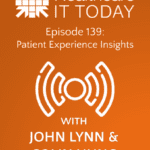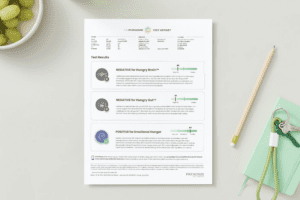The following is a guest article by Kristen Jacobsen, Vice President of Marketing and OmniChannel Engagement at RevSpring
“Although we live in an information technology age, we often find ourselves in failure to communicate situations.” – Johnny Tan
That quote is referring to interpersonal relationships, but it’s equally apt in healthcare. There’s no shortage of channels at our disposal, but real connections are made with patients when these channels are used in the right ways at the right times. Understanding how technology can best facilitate patient communication means knowing how patients prefer to engage.
Listening to patients is important, which is why our organization leads an independent national survey of U.S. patients every few years. Our 2023 Voice of the Patient survey, conducted by Key Point Intelligence and including 1,000 patients nationwide, reveals many insights. I share five of the top takeaways from the survey here, but urge you to read the entire survey report—and share it with others in your organization—for a fuller understanding of what patients expect and how providers can leverage technology to deliver on those expectations.
Improving the patient experience is the ultimate goal for most providers. From self-service, consistency and personalization, to understanding patients and bridging gaps between their expectations and experiences, informed technology engagement strategies can increase patient satisfaction and loyalty—and bring better business results too.
Increase Self-Service in Convenient Ways Patients Prefer
People want the convenience of self-service, yet nearly one-third of all survey respondents said they are frustrated with a lack of healthcare-related self-service options. The good news: technology exists now for self-scheduling appointments, including changing appointments online or via text, and automated appointment check-ins including digital patient forms with pre-filled information. When patients can self-serve using these types of technologies during pre-service, providers save time and money.
Payments are another area where self-service matters to many patients. Digital payment options, such as text or email prompts with links to online payment portals, are just two of the self-service payment options patients want today. It’s also possible for healthcare providers to store card information on file to increase payment self-service. When patients pre-authorize a stored debit or credit card up to an approved cap, their card information can be automatically pulled when a bill arises up to that pre-approved amount. Many people say they would pay faster if they were presented with a convenient payment option that they prefer, and a card on file is about the most convenient way to pay today.
Build Trust with Consistency Throughout the Entire Patient Experience
Consistent patient engagement—such as knowing how a patient wants to be addressed—is tough when disparate and disconnected applications are used throughout a single healthcare system. It’s a common challenge, particularly when health systems are growing through mergers and acquisitions.
Yet providers who make the effort to engage in a consistent manner build trust with patients. Our survey found that having a consistent experience is very important to 59% of all respondents (a 31% increase since our 2017 survey). Seen through another lens, 23% said personal dissatisfaction with their provider was directly related to inconsistent communications.
How can technology improve provider consistency? Just two simple solutions—consistent use of the same phone number when sending texts and using preferred methods of communication with each patient according to the type of message—can make a big difference in how patients perceive their providers. In fact, more than 80% of survey respondents strongly or somewhat strongly agreed that they were more likely to trust providers that communicated with them via their preferred channels.
If connecting all your engagement technology sounds like more work than your IT staff can take on, consider reducing the number of vendors you’re using to just a few or even one. That makes it much easier for the IT team and administrative staff—and, ultimately, better for patients too.
Remember that One Channel Rarely Fits All
Here’s the tricky thing about consistency: it doesn’t mean channel uniformity. Consider these survey findings:
- Email was the most preferred method of communication for pre-care cost estimates (57%), post-care instructions (55%), and test results and marketing/sales materials (57%)
- Text messaging captured the top spot (55%) for appointment reminders and pre-care instructions
- Traditional print and mail was the number one communication vehicle for bills and statements (54%), including 44% of the youngest survey respondents (ages 18-26) and 75% of the oldest respondents.
If you’re reading between the lines, you’ve probably already guessed that it takes effort to really understand how patients want providers to communicate with them in every situation. Providers that make generalized assumptions based on demographics could very well be leaving many patients behind.
Use Smart Data to Personalize Communication at Scale
Fortunately, data analytics cuts through the clutter and makes understanding each patient easy. If your organization captures behavioral and demographic data for each patient, technology can chart a path to personalized engagement without overwhelming anyone. Such personalization also can tell you which messages resonate most with which patients, how to eliminate unnecessary asks and clicks, and even the message cadence that works best.
Patients truly benefit from the simplicity that results. Instead of receiving too many emails or annoying text messages from you, they will be empowered to conveniently receive (and respond to) your messages, including prompts to pay. Patients also appreciate the ability to proactively self-serve, making and changing appointments at their leisure.
Educate Patients to Bridge Gaps Between Expectations and Experience
Our survey found big gaps between what patients expect and what they experience with their providers. Many (51%) told us that their provider had never asked them how they preferred to receive various types of healthcare communications. Nearly one quarter (23%) did not know how to change communication preferences on their own. And 34% said they did not believe their provider remembered their preferences.
I suspect that at least some of these disconnects may be attributed to a simple lack of patient awareness rather than what their providers offer. So make sure patients are educated and reminded often about how they can make their engagement preferences known and honored. Vendors should help to communicate new digital or self-service options before, during, and after launches. And existing vehicles—print billing statements, payment portals, and your website—are ideal places for reminding patients of all of their communication options and making it easy for them to access them.
Positive engagement experiences from pre-service to payments will make your patients feel known, understood and respected. That’s the best way I know to cultivate patient trust and loyalty. It also means more efficiency for your organization, faster payments and an increasingly healthy bottom line.
 About Kristen Jacobsen
About Kristen Jacobsen
Kristen Jacobsen is Vice President of marketing and OmniChannel engagement at RevSpring. She has more than 25 years of experience with leading customer experience and healthcare technology companies.













